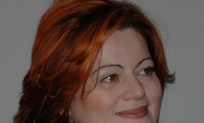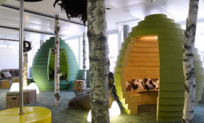Elma Durmisevic
Michael McDonough
Ton Venhoeven
Ahmet Hadrovic
Michael Braungart
Marcel Vroom
Wim Poelman
Rudi Daelmans
Martin Smit
Nirvana Pistoljevic
Natasa Perkovic
Sanja Durmisevic
Miriam Losse
Jan Brouwer
Martin Wollensak
Thomas Bednar
Maarten Dansen
Jaap Wiedenhoff
Adnan Pasic
Ivan Straus
Job Roos
Boran Pikula
Dzenana Bijedic
Haris Hadzialic
Ejub Dzaferovic
Almedina Hadzic
Alisa Grabus
Sanela Klaric
Azra Korjenic
Ken Yeang
Dushko Bogunovich
Michael McDonough
Ton Venhoeven
Ahmet Hadrovic
Michael Braungart
Marcel Vroom
Wim Poelman
Rudi Daelmans
Martin Smit
Nirvana Pistoljevic
Natasa Perkovic
Sanja Durmisevic
Miriam Losse
Jan Brouwer
Martin Wollensak
Thomas Bednar
Maarten Dansen
Jaap Wiedenhoff
Adnan Pasic
Ivan Straus
Job Roos
Boran Pikula
Dzenana Bijedic
Haris Hadzialic
Ejub Dzaferovic
Almedina Hadzic
Alisa Grabus
Sanela Klaric
Azra Korjenic
Ken Yeang
Dushko Bogunovich

Lecture:
Measuring perception
17:30h
Day three, Sunday 11 September
Collegium Artisticum, Sarajevo
SANJA DURMIŠEVIĆ
Dr. Sanja Durmisevic graduated at Delft University of Technology, the Netherland, and thereafter did a PhD research at the same University on the topic of ‘Perception aspects in underground spaces using intelligent knowledge modelling: public safety and comfort’. She worked three years for EGM architects, as a researcher, in the domain of healthcare buildings. Currently, she is a Research Scientist at the Netherlands Organization for Applied Scientific Research (TNO). Her research interests focuses on the relationship between built environment and user needs. Her research blends psychology, architecture and advanced information modeling technology as to help develop new design concepts that would provide a better fit between user needs and built environment.
Users’ needs and built environment
During the design process, various partners are involved, such as governmental institutions, urban planners, architects, constructors, technical advisors and users where each one of them has certain expectations/needs and knowledge expertise. Among all partners involved, the communication with the end users is the least proficient, which results in a lack of commonly shared knowledge on users’ needs and successful translation of these needs into design. The distance between a designer and an end user became greater over time. This is not so difficult to understand, since the scale and the complexity of building projects increased, with a large amount of the end users as a result. Users are mostly involved at the end of the design process to comment on already developed design. The architect ‘assumes’ that he/she knows exactly what the user requirements are and according to these assumptions the architect designs a building. Yet the end result – a building, or an urban plan - should not be a sum of the personal assumptions but rather a product of design decisions based on the best available evidence, and in this case those are the needs of the users in a specific context, weather that is a mobility hub, a hospital or a city district. But to be able to obtain the ‘best available evidence’ there should also be ways to study the successful designs and to learn from them. We should be able to understand why certain environments are more successful than the others? What the secret of that success is? What are the design intentions and how successful where they? In this lecture, Sanja Durmisevic will discuss the way of dealing with this topic and will explain the added value of proposed approach.
During the design process, various partners are involved, such as governmental institutions, urban planners, architects, constructors, technical advisors and users where each one of them has certain expectations/needs and knowledge expertise. Among all partners involved, the communication with the end users is the least proficient, which results in a lack of commonly shared knowledge on users’ needs and successful translation of these needs into design. The distance between a designer and an end user became greater over time. This is not so difficult to understand, since the scale and the complexity of building projects increased, with a large amount of the end users as a result. Users are mostly involved at the end of the design process to comment on already developed design. The architect ‘assumes’ that he/she knows exactly what the user requirements are and according to these assumptions the architect designs a building. Yet the end result – a building, or an urban plan - should not be a sum of the personal assumptions but rather a product of design decisions based on the best available evidence, and in this case those are the needs of the users in a specific context, weather that is a mobility hub, a hospital or a city district. But to be able to obtain the ‘best available evidence’ there should also be ways to study the successful designs and to learn from them. We should be able to understand why certain environments are more successful than the others? What the secret of that success is? What are the design intentions and how successful where they? In this lecture, Sanja Durmisevic will discuss the way of dealing with this topic and will explain the added value of proposed approach.

© 2011 SARAJEVO GREEN DESIGN FESTIVAL
